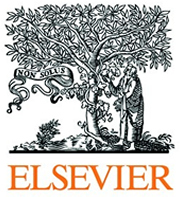2007 Dec 7;364(1):131-7. Epub 2007 Oct 2.
Cannabinoid receptor agonists are mitochondrial inhibitors: a unified hypothesis of how cannabinoids modulate mitochondrial function and induce cell death.
Athanasiou A1, Clarke AB, Turner AE, Kumaran NM, Vakilpour S, Smith PA, Bagiokou D, Bradshaw TD, Westwell AD, Fang L, Lobo DN, Constantinescu CS, Calabrese V, Loesch A, Alexander SP, Clothier RH, Kendall DA, Bates TE.
Abstract
 Time-lapse microscopy of human lung cancer (H460) cells showed that the endogenous cannabinoid anandamide (AEA), the phyto-cannabinoid Delta-9-tetrahydrocannabinol (THC) and a synthetic cannabinoid HU 210 all caused morphological changes characteristic of apoptosis. Janus green assays of H460 cell viability showed that AEA and THC caused significant increases in OD 595 nm at lower concentrations (10-50 microM) and significant decreases at 100 microM, whilst HU 210 caused significant decreases at all concentrations. In rat heart mitochondria, all three ligands caused significant decreases in oxygen consumption and mitochondrial membrane potential. THC and HU 210 caused significant increases in mitochondrial hydrogen peroxide production, whereas AEA was without significant effect. All three ligands induced biphasic changes in either mitochondrial complex I activity and/or mitochondrial complex II-III activity. These data demonstrate that AEA, THC, and HU 210 are all able to cause changes in integrated mitochondrial function, directly, in the absence of cannabinoid receptors.
Time-lapse microscopy of human lung cancer (H460) cells showed that the endogenous cannabinoid anandamide (AEA), the phyto-cannabinoid Delta-9-tetrahydrocannabinol (THC) and a synthetic cannabinoid HU 210 all caused morphological changes characteristic of apoptosis. Janus green assays of H460 cell viability showed that AEA and THC caused significant increases in OD 595 nm at lower concentrations (10-50 microM) and significant decreases at 100 microM, whilst HU 210 caused significant decreases at all concentrations. In rat heart mitochondria, all three ligands caused significant decreases in oxygen consumption and mitochondrial membrane potential. THC and HU 210 caused significant increases in mitochondrial hydrogen peroxide production, whereas AEA was without significant effect. All three ligands induced biphasic changes in either mitochondrial complex I activity and/or mitochondrial complex II-III activity. These data demonstrate that AEA, THC, and HU 210 are all able to cause changes in integrated mitochondrial function, directly, in the absence of cannabinoid receptors.
- PMID:
- 17931597
- [PubMed – indexed for MEDLINE]
-
Publication Types, MeSH Terms, Substances
Publication Types
MeSH Terms
- Apoptosis/drug effects*
- Arachidonic Acids/pharmacology*
- Cannabinoid Receptor Agonists*
- Cannabinoids/pharmacology*
- Carcinoma, Non-Small-Cell Lung
- Cell Line, Tumor
- Dronabinol/analogs & derivatives*
- Dronabinol/pharmacology*
- Electron Transport Complex I/drug effects
- Electron Transport Complex II/drug effects
- Electron Transport Complex III/drug effects
- Endocannabinoids
- Humans
- Hydrogen Peroxide/metabolism
- Lung Neoplasms
- Membrane Potential, Mitochondrial/drug effects
- Mitochondria/drug effects*
- Mitochondria/physiology*
- Models, Biological
- Oxygen Consumption/drug effects
- Polyunsaturated Alkamides/pharmacology*
Substances
LinkOut – more resources
Full Text Sources
Other Literature Sources
Miscellaneous



